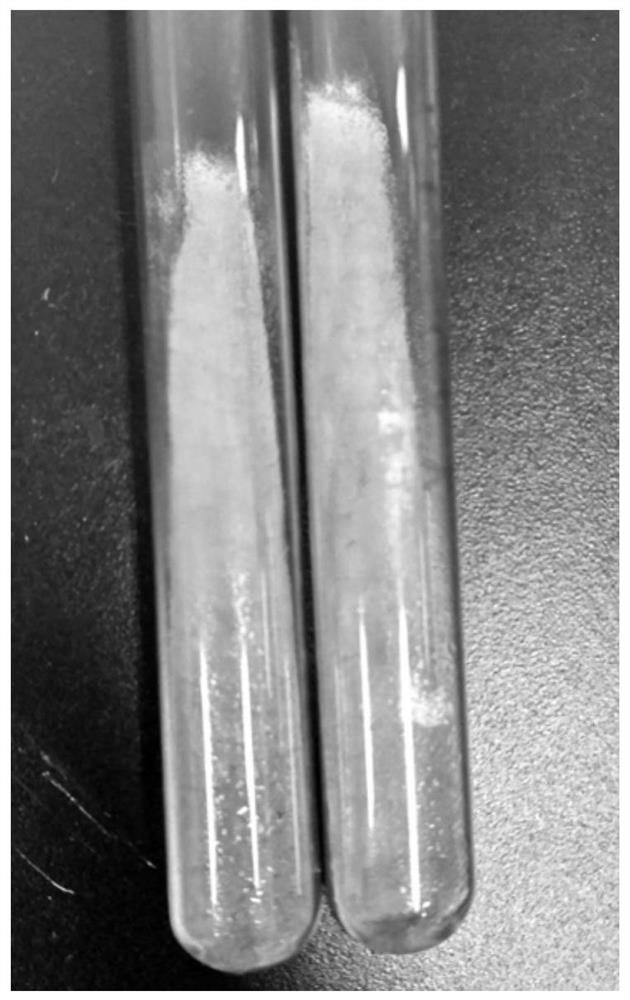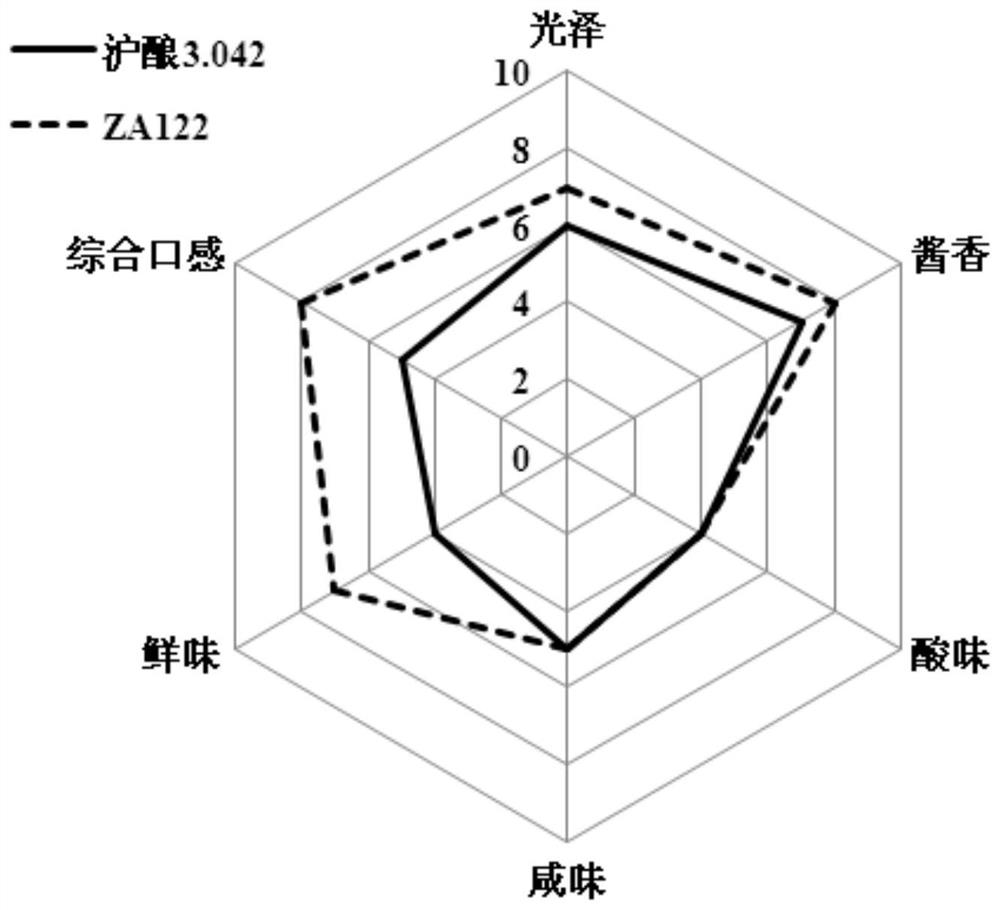A strain of Aspergillus oryzae za122 and its application
A technology of ZA122 and Aspergillus oryzae, applied in the field of microorganisms, can solve the problems of large demand for yeast cells, complicated operation and high cost input, and achieve the effect of large production application value, broad application prospect and improvement of crude oil quality.
- Summary
- Abstract
- Description
- Claims
- Application Information
AI Technical Summary
Problems solved by technology
Method used
Image
Examples
Embodiment 1
[0040] The mutagenesis of embodiment 1 Aspergillus oryzae strain
[0041] The spores of the mature strain Huyao 3.042 were made into spore suspension, and the spore suspension was subjected to ARTP mutagenesis. The spore suspension after ARTP mutagenesis was diluted to 10 with sterile saline according to the 10-fold gradient dilution method. -1 、10 -2 、10 -3 、10 -4 、10 -5 、10 -6 Concentration, made spore dilution.
[0042] Take 0.2ml of the spore dilution and spread it on the sulfaguanidine soybean protein plate medium, and incubate at 30° C. in the dark for 7 days. During the cultivation process, observe and record the growth of the colony, the speed of the formation of the transparent circle, the size of the transparent circle, measure and calculate the ratio of the circle diameter. A total of 146 single colonies were observed and recorded during this process, among which 39 strains had a fast growth rate and a large circle-to-diameter ratio.
[0043] The above 39 ba...
Embodiment 2
[0045] Embodiment 2 Aspergillus oryzae koji material production and fermentation
[0046] Mix wheat, defatted soybeans, and water in a certain proportion and mix them evenly. After packing into Erlenmeyer flasks, sterilize at 121°C for 30 minutes to make solid Erlenmeyer flask culture medium. Pick 1 cyclospore of the slanted strain of Aspergillus oryzae in Example 1 and inoculate it in the culture medium of the Erlenmeyer flask, and cultivate it at 32° C. for 96 hours until the koji material matures to obtain the koji material of the Erlenmeyer flask.
[0047] Add 2 times of brine to the koji material of the triangular flask for high-salt dilute fermentation, and decompose and ferment in a 45°C incubator for 30 days. Shake well after fermentation and filter, and the filtrate is determined for inosinic acid content by HPLC. Three strains with high content of inosinic acid were obtained, named CB122, CB123, CB124. The detection results of inosinic acid are shown in Table 1.
...
Embodiment 3
[0052] The genetic stability of embodiment 3 Aspergillus oryzae ZA122 strain
[0053] The aspergillus oryzae ZA122 bacterial strain gained in embodiment 2 is continuously subcultured on the bean juice slant medium for 10 generations, observes and records the growth situation of each generation of bacterial strains, and the 1st generation, the 5th generation and the 10th generation slant species (see figure 2 ) Carry out Erlenmeyer flask cultivation and fermentation according to the method described in Example 2. Detect the content of amino nitrogen and inosinic acid in fermented soy sauce to judge the genetic stability of Aspergillus oryzae ZA122 strain. If the error between the content of amino nitrogen and inosinic acid in ten generations is within 10%, it means that the genetic stability of the strain is good . The test results are shown in Table 2, showing that the Aspergillus oryzae ZA122 strain of the present invention has good genetic stability.
[0054] Table 2 Aspe...
PUM
 Login to View More
Login to View More Abstract
Description
Claims
Application Information
 Login to View More
Login to View More - R&D
- Intellectual Property
- Life Sciences
- Materials
- Tech Scout
- Unparalleled Data Quality
- Higher Quality Content
- 60% Fewer Hallucinations
Browse by: Latest US Patents, China's latest patents, Technical Efficacy Thesaurus, Application Domain, Technology Topic, Popular Technical Reports.
© 2025 PatSnap. All rights reserved.Legal|Privacy policy|Modern Slavery Act Transparency Statement|Sitemap|About US| Contact US: help@patsnap.com



